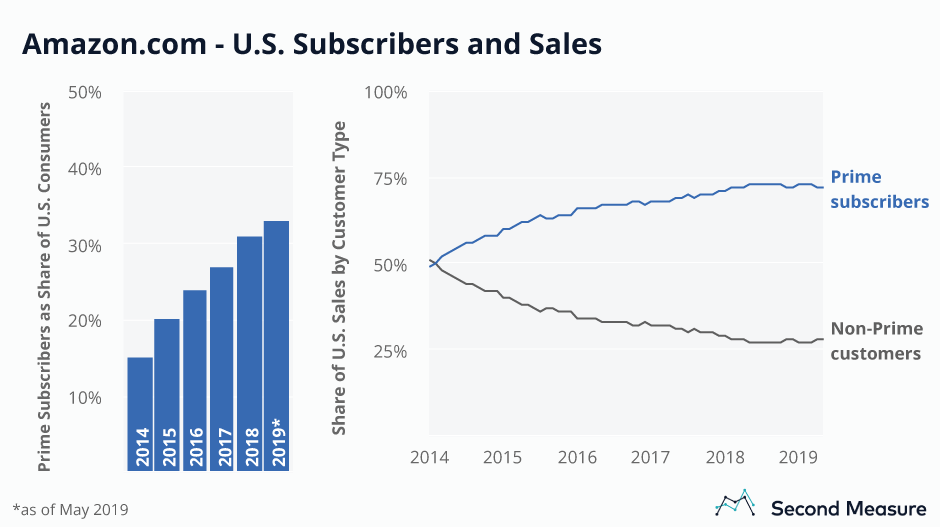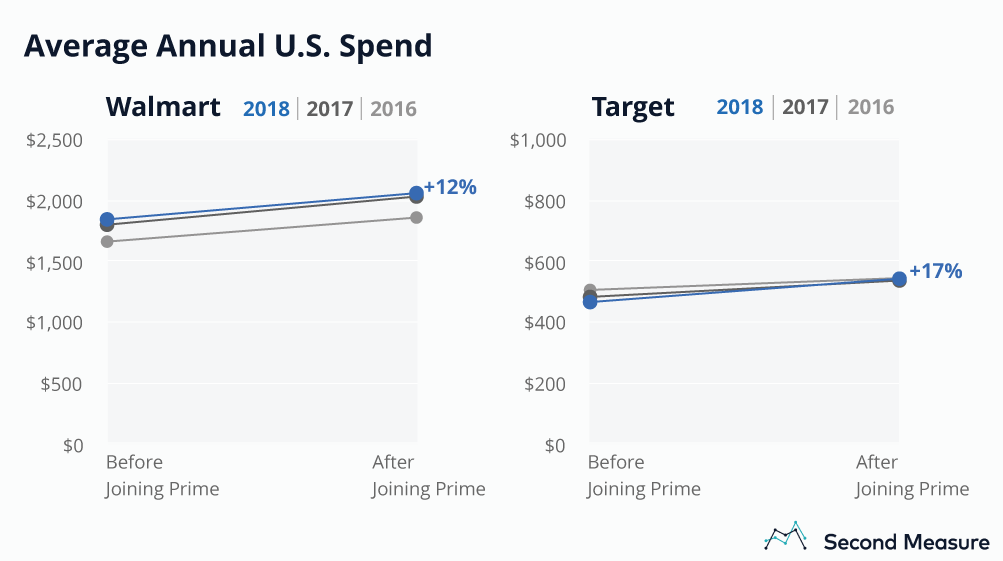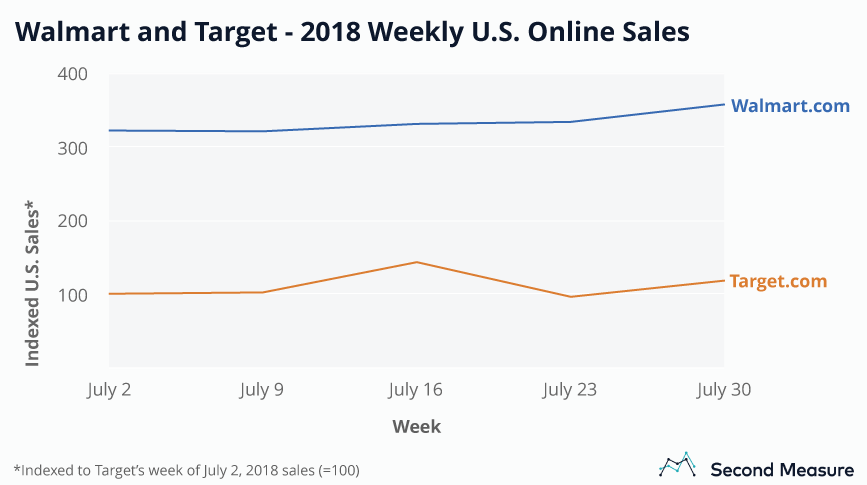NOTE: Bloomberg Second Measure launched a new and exclusive transaction dataset in July 2022. Our data continues to be broadly representative of U.S. consumers. As a result of this panel change, however, we recommend using only the latest posts in assessing metrics, and do not support referring to historical blog posts to infer period-over-period comparisons.
The fifth annual Amazon Prime Day starts Monday. It’s now a two-day, global affair when Prime members revel in discounts, and the company racks up sales and signups. It’s no shock that members dramatically increase their spending at Amazon after joining Prime. What is surprising: They also increase their spending at Amazon’s top competitors, Target and Walmart.
Last year’s Prime Day was Amazon’s biggest 36-hour international sales period ever, surpassing Black Friday, Cyber Monday, and Prime Day 2017 (the previous record holder). Amazon reported that more people worldwide signed up for Prime on July 16, 2018 than on any other day in history. As we detailed, these new Prime subscribers may be the biggest boon of Amazon’s sales holiday. In May 2019, 33 percent of U.S. consumers were Prime members, and last year, Prime customers accounted for an astonishing 72 percent of U.S. Amazon.com sales—up from about 50 percent in 2014.

After joining Prime, customers spend more on purchases from Amazon.com—a lot more. First-time members who joined between 2015 and 2018 more than doubled their spending at Amazon.com in their first year of Prime, which includes a 30-day free trial. Recent Prime subscribers spent over $1,200 in the year after signing up, on average, compared to roughly $600 spent in the year before having access to Prime.
Walmart and Target may love Prime, too
A Prime membership gives customers access to millions of products and free one-day shipping, so it would be easy to imagine new subscribers doing most of their household shopping at Amazon and ditching major competitors Target and Walmart. However, data reveals customers slightly increase their spending at these retailers after joining Prime.
At the same time they were doubling their spending at Amazon, new Prime members, in 2018, spent 12 percent more at Walmart and 17 percent more at Target than they did in the year before joining Prime.

One theory about this trend is that people may decide to join Amazon Prime when they have an increase in discretionary income—extra money that can also be spent at other stores. Other shoppers may take the Prime plunge at a time when they know they’ll be making a lot of purchases, such as when they move, get married, or have a child. These life milestones prompt a need to increase spending across the board.
Walmart and Target seem to be aware that Prime members are also their shoppers, and they, too, offer online discounts on Prime Day in hopes that deal-seekers may want to comparison shop. Like Amazon, these retailers now offer one-day shipping, but unlike Amazon, they don’t require a membership to access deals, and they offer same-day, in-store pick up.
Last year’s data shows the strategy worked well for Target but less so for Walmart. The week of Prime Day, Target.com sales were up 28 percent over average weekly sales in July, but sales at Walmart.com were in line with the weekly average.

‘Everybody’ shops at the big three, but Amazon reigns in web sales
Despite stiff competition for Prime-Day sales, there’s no question that Walmart, Target, and Amazon have won their way into Americans’ hearts and wallets. All of these commerce giants attract a huge swath of the U.S. population. Seventy-four percent of U.S. consumers have made a purchase at Amazon.com in the past seven years. The figure is 77 percent at Walmart and 78 percent at Target, including both in-store and online shoppers.
However, Amazon is, by far, America’s favorite digital shopping destination. Just under a quarter of U.S. consumers have purchased something at Target.com, and a little over one-third have bought from Walmart’s website.
Interested in how Prime Day sales will shake out for Amazon and its competitors this year? Request a demo.
And, remember, we’re hiring.
